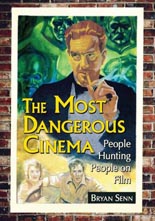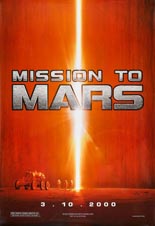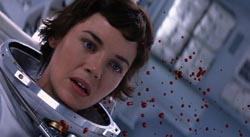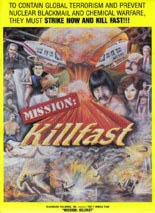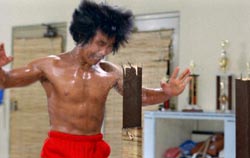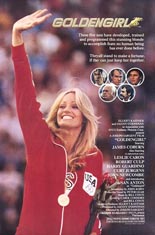
 Goldengirl is about how fast a girl named Goldine can run into a mattress on the wall. At least at the beginning of this oddball sports/sci-fi vehicle for tall, blonde Susan Anton, then a model turned actress, singer and Dudley Moore sperm receptacle — not necessarily in that order.
Goldengirl is about how fast a girl named Goldine can run into a mattress on the wall. At least at the beginning of this oddball sports/sci-fi vehicle for tall, blonde Susan Anton, then a model turned actress, singer and Dudley Moore sperm receptacle — not necessarily in that order.
Goldine knows her adopted father, neo-Nazi Dr. Serafin (Curt Jurgens, The Spy Who Loved Me), has been grooming her to be an Olympic champion; what she doesn’t know is that he’s screwed with sinister eugenics and cooked-up injections to get her there.
 Dr. Serafin’s pie-in-the-sky goal is to have her win gold medals in all three women’s sprint events in the 1980 Olympics in Moscow, so that they’ll be able to pocket a rather arbitrary $10 million in endorsement deals and the like. To help plan for that payday, merchandising expert Jack Dryden (James Coburn, Looker) is brought in. Inevitably, Dryden and the much, much younger Goldine soon step up to the podium — the sexual podium.
Dr. Serafin’s pie-in-the-sky goal is to have her win gold medals in all three women’s sprint events in the 1980 Olympics in Moscow, so that they’ll be able to pocket a rather arbitrary $10 million in endorsement deals and the like. To help plan for that payday, merchandising expert Jack Dryden (James Coburn, Looker) is brought in. Inevitably, Dryden and the much, much younger Goldine soon step up to the podium — the sexual podium.
Sporting a Bill Conti theme crooned by Anton herself, the run-on-titled “Slow Down I’ll Find You,” Goldengirl holds no luster beyond the beauty of its statuesque starlet. Joseph Sargent (The Taking of Pelham One Two Three) directs with a pedestrian nature reflected in Coburn’s just-show-up performance. The results are as deadly dull as Anton is crazy-hot, landing the speculative tale on the side of “agony of defeat,” with “thrill of victory” far out of reach. —Rod Lott

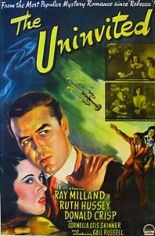
 Given its reputation as a superior Gothic shocker,
Given its reputation as a superior Gothic shocker, 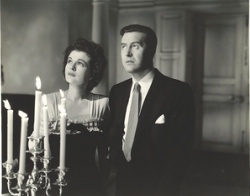 Soon after moving in, the Fitzgeralds experience strange phenomena, including but not limited to sobs at night, wilting roses, fluctuating temps, slamming doors, flickering candles and the overpowering smell of mimosa. A séance helps brings buried secrets to light, because the aghast neighbors sure don’t like to.
Soon after moving in, the Fitzgeralds experience strange phenomena, including but not limited to sobs at night, wilting roses, fluctuating temps, slamming doors, flickering candles and the overpowering smell of mimosa. A séance helps brings buried secrets to light, because the aghast neighbors sure don’t like to. 
